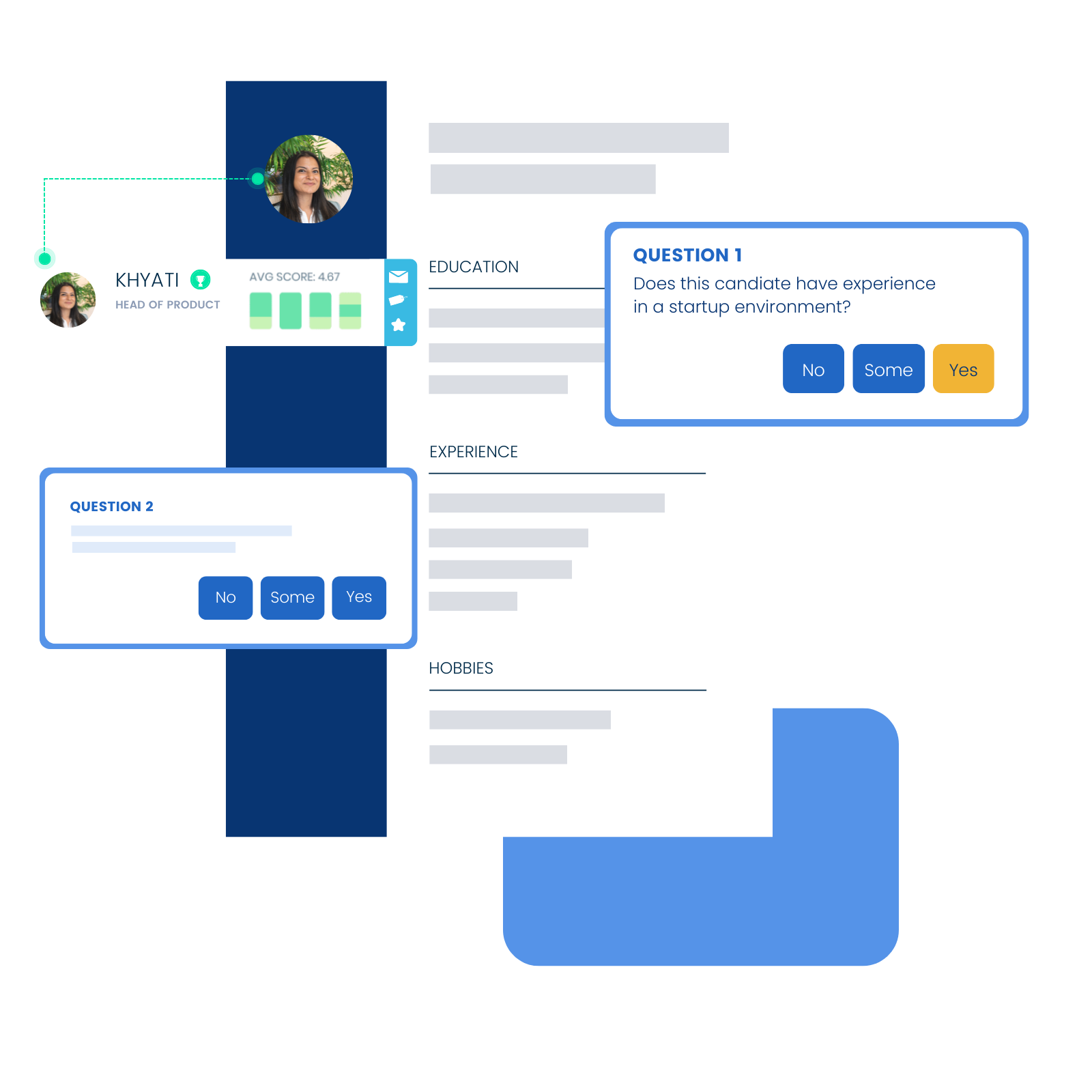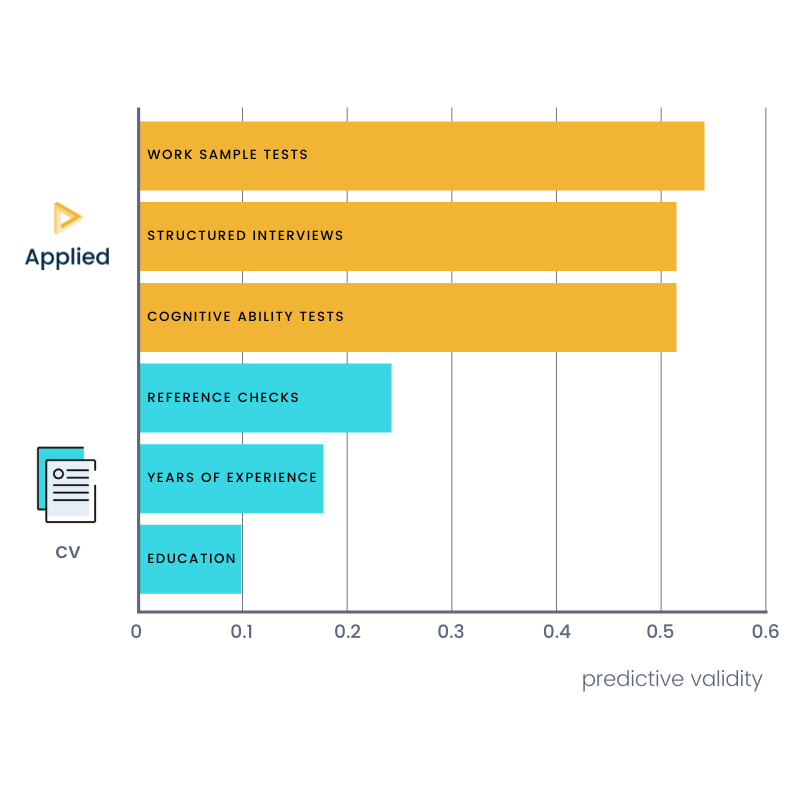
Neurodiversity awareness
In a nutshell, neurodiversity is the basic idea that people’s brains experience the world in different ways.
When we talk about neurodiversity, we often tend to think of conditions like autism, but the neurodiversity umbrella covers a much wider spectrum of differences in brain anatomy.
Neuro-distinct identities are often marginalised, we may think of them as deficits rather than what they actually are - which is just different ways of thinking.
Examples of neurodiversity
Autism and Autistic Spectrum Disorder
- Sensory hyper and hypo sensitivities
- Difficulty understanding what others are thinking or feeling
- Social anxiety
ADD and ADHD
- Distractibility
- Difficulty with attention and concentration
Learning differences
- Dyslexia
- Dyspraxia
- Dyscalculia
These neurodivergent identities have a negative stigma attached to them as we tend to focus on the limitations, rather than the benefits.
Whilst every individual is of course different, someone on the autistic spectrum, for example, is more likely to have a flare for concentration, pattern detection and retaining information.
And other forms of neurodivergence also come with skills that other may not possess.
- ADD and ADHD: Creativity, hyper-focus and has even been linked to entrepreneurship
- Dyspraxia: Verbal skills, empathy and intuition
- Dyscalculia: Verbal skills and innovative thinking
- Dyslexia: Visual thinking, creativity and 3-D mechanical skills
Neurodivergent identities are far more complex than just these (very much generalised) benefits and limitations - but we can begin to see how the narrative around neurodiversity can be flipped.
Neurdivergence isn’t a disadvantage: it’s simply a different way of thinking and a different skill set.
There are two ways in which we can help support neurodversity in the workplace…
1. Universal design
Universal design is the practice of designing environments so that they can be accessed and understood by everyone.
When we make adjustments to cater for specific needs, it often turns out that more people benefit than just those who the intervention was originally designed for.
Adding ramps to pavements, for example, may have been intended specifically to help people in wheelchairs…
But they also make life easier for anyone pulling along luggage or pushing pushchairs.
The same general rule applies to the workplace.
Designing environments and processes that are inclusive of neurodivergent talent will likely benefit more neurotypical candidates too.
Even though we all have different ways of thinking, communicating and solving problems, most of the working world is biased towards extroverts.
Activities geared towards extroverts like presenting, brainstorming and group projects are considered normal practices in most workplaces.
However, whilst statistics vary (people tend to exaggerate their extraversion on personality tests), only 12-22% of people are extremely extroverted. The rest of us are either introverted or somewhere in between.
If you’re not an extrovert, trying to ‘fit in’ at work can be demanding.
And so neuro-inclusion is about mitigating stresses that these scenarios may cause so that people can put their energy into innovation.
If you’re looking to hire and retain more neurodivergent talent, you’ll need to ensure your hiring process and working environment is inclusive by design - something we’ll cover further down…
2. Individualised support
Whilst universal design will make a measurable impact on neuro-inclusion, this approach alone isn’t enough.
We shouldn't dictate to people what they may or may not need to feel comfortable.
Neurodiversity covers a broad spectrum: some people will be more comfortable share their neuro-identity with coworkers and request support than others.

Since every individual is different, some degree of personalised support is required to ensure both your hiring process and workplace are neuro-inclusive.
This isn’t about about getting candidates to disclosure anything about themselves, it’s about making sure they’re comfortable.
Instead of asking candidates of they have any disabilities or conditions they’d like to disclosure, just ask if they’re comfortable - is there anything you can do to adjust the lighting or space? Would they benefit from noise-cancelling headphones?
Unconscious bias: a quick science lesson
Everyone has unconscious biases, no matter how pure your intentions.
This isn’t necessarily something to be shamed of, it's an inescapable part of being human.
To navigate our everyday lives, our brains draw patterns and draw conclusions based on information stored in our mental lockers.
When people describe themselves as being ‘on autopilot’ , this is essentially what they’re referring to.
Whilst this tendency to make assumptions and switch of the more conscious part of our brain is extremely useful in our day-to-day lives, it can have serious negative consequences when it comes to people-based, workplace decisions.
We tend to make our minds up about someone within seconds, and then look for information that confirms our assumptions.

Unconscious bias training doesn’t work. Why? Because for the most part, we’re unaware of our biases.
We often tend to unconsciously fall back on our shortcut-based decision-making system when we should be making more conscious decisions.
The only way to measurably improve outcomes is by designing bias out of our processes…
You can’t completely remove bias from a person, but you can remove it (or at least reduce its effects) from a process like hiring.
How to make your hiring process more neuro-inclusive
Write clear, skill-based job descriptions
When it comes to neurodiversity recruitment, the first thing you’ll want to look at is your job descriptions.
If you want to attract candidates from a diverse array of backgrounds, you should avoid over-indexing on education experience.
Instead, simply list the core skills needed for the job, rather than credentials (we’ll show you how to test these skills in the most predictive way possible in the next section).
Supporting neurodiversity in the workplace is about removing ambiguity. When job descriptions include ‘nice-to-haves’, some candidates will see these are strict rules around who can apply, whilst others will view them as vague rules.
So, the best practice is to just list the essential skills required.
To make sure the language used in your job description is neuro-inclusive, keep the reading difficulty equal to or below that needed to perform the job itself.
Write in short, simple sentences and keep jargon to a minimum (industry standard acronyms are completely fine e.g SEO, B2B etc).
You can quickly check the reading burden of your writing using the Hemingway Editor…
Or you can check our our Job Description Tool - which was specifically bully to help you craft inclusive, conversion-optimised job descriptions.

You can read our complete guide to inclusive job descriptions here.
Revise your CV screening process
The assessment process can be daunting for any candidate - whatever their neuro-identity.
The key to neurodiversity recruitment is being transparent around next steps, and what is actually expected of candidates.
Most hiring processes start with a CV sift… but you might want to rethink this step if you want to be inclusive of neurodivergent candidates.
Structured CV scoring will make this process more fair and data-driven. This is the practice of scoring CVs against a set list of questions, rather than waiting for someone's impressive-looking degree of work experience to ‘jump out’ at you.
By forcing ourselves to use our more conscious system of thinking, we tend to make less biased, more accurate decisions.

However - given that neurodivergent candidates are far less likely to have the typical background you’re used to seeing, you might want to consider ditching CVs altogether in favour of more ethical, predictive assessments.
The most inclusive and predictive means of screening candidates is by using ‘work sample questions’.

These are job-specific, situational questions that get candidate to think and work as if they were already in the job.
So instead of relying on someones background to work out whether or not they can do the job, work samples ask candidates to perform small parts of the role - free from assumptions.

To make sure all candidates have a fair and equal opportunity to showcase their skills, be sure to communicate exactly what each question is looking for.
You might also want to be explicit around what is isn’t being tested. Unless the role you’re hiring requires copywriting skills, let candidates know that they’re not being tested on spelling/grammar and that they can use bullet points if they’d prefer.
To get the most out of your work samples, give yourself a rubric to score answers against. Not only has this been proven to help improve diversity, but will also result in more objective decisions.
A scoring rubric doesn’t need to be anything detailed - a few bullet points noting what a good, mediocre and poor answer might look like is enough.
Here at Applied, we use a 1-5 star scale to score candidates against. For each step of the assessment process we have three reviewers score answers and then average out scores to make the final decision. Why? Because using multiple reviewers has been shown to reduce bias and yield more accurate scores.
Neuro-inclusivity checklist for assessments:
- Give candidates time: make sure candidates have plenty of time to submit their answers.
- Readability: ensure your questions can read and answered in multiple ways - you can use the Microsoft Accessibility Tool for this.
- Clarity: only assess the core skills needed for the job
Make sure candidates are prepared and comfortable in interviews
Instead of asking about candidates’ backgrounds, try using work sample questions at the interview stage too.
You can also include roleplay-based tasks to simulate parts of the job.
Ahead of interviews, be as transparent as possible around what they will involve.
If candidates won’t be required to think and respond to questions on-the-spot should they get the job (this will be most jobs outside of commercial roles), then you should also consider giving candidates time to prepare their answers ahead of time.
As we covered above, your job isn’t to get candidates to disclose their neuro-identity, its simply to make sure they feel comfortable.
Neurodivergent candidates will have more ‘spiky’ skills profiles
People with a neurodivergence are more likely to perform much stronger in some areas, and lower in others - which is what we call a ‘spiky’ profile.
Here’s what a more typical skills profile looks like within our platform…

At a glance, a spiky profile may make a candidate seem less ‘well-rounded’ than other candidates.
However, this is largely due to our bias towards extroversion.
If your testing purely for the practical skills and behaviours required for the job, work samples will help clear up some of the ‘noise’ so you can see who has the actual skills you’re looking for.
Products to support neurodiversity
Making your hiring process more neuro-inclusive doesn’t require special software.
Everything above can be implemented without spending a penny.
However, if you’re looking to take the next step, a platform like Applied will automate things like anonymisation and candidate management, whilst ensuring every step of your process is data-driven and bias-proofed.
You can explore the Applied Platform at your own pace via our on-demand demo.

Applied is the essential platform for fairer hiring. Purpose-built to make hiring ethical and predictive, our platform uses anonymised applications and skills-based assessments to improve diversity and identify the best talent.
Start transforming your hiring now: book in a demo or browse our ready-to-use, science-backed talent assessments.

.png)
.png)

.png)

